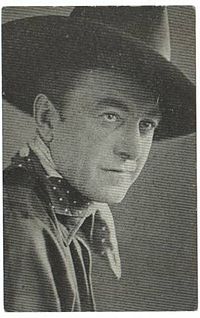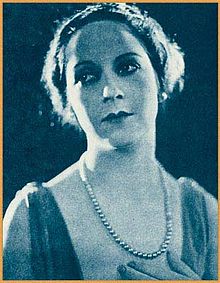A 44 Calibre Mystery
A 44Calibre Mystery is a 1917 American short Western film, featuring Harry Carey. Carey plays the role of Sheriff Cheyenne Harry. He saves Kitty Flanders from Pete McGuire and takes her safely home. McGuire hides in a shack on Mr. Flanders stake and Harrys deputy is shot dead, apparently by Mr. Flanders. McGuire offers to keep quiet about the murder if Flanders gives him half a stake and his daughters hand in marriage. Mr. Flanders confesses his crime to Sheriff Harry and learns that he is innocent. Sheriff Harry notices McGuires gun and accuses him of the crime, but they are killed as they try to escape. The film concludes as Kitty Flanders confesses her love to Sheriff Cheyenne as she bandages his wounds from the fight.
Set in the town of Driftwood, the film begins when Pete McGuire, known by the alias Lone Jack arrives in town and molests Kitty Flanders. Sheriff Cheyenne Harry intervenes and knocks down McGuire and takes Kitty Flanders to her home. McGuire becomes aware that Sheriff Harrys deputy, Horton, is out to arrest him and McGuire hides out on a shack on Flanders claim. Horton is later killed, apparently by Mr. Flanders, and McGuire offers to keep quiet in exchange that he gives him half a stake in the claim and have Kitty Flanders marry him. Later, Sheriff Harry learns that Horton was killed by a 44Calibre round. Mr. Flanders confesses to Sheriff Harry that he shot and killed Horton, but the sheriff points out that his gun was of a different size. Sheriff Harry notices that McGuires gun is a 44Calibre and accuses him of killing Horton. McGuire and an accomplice attempt to escape, but are killed by the Sheriff in a fight. Kitty Flanders confesses her love to Sheriff Cheyenne as she bandages his wounds. noteThe screen story originates from T. Shelley Sutton and was adapted to the scenario by Charles J. Wilson. However, Exhibitors Trade Review states that while Shelley Sutton wrote the film, the scenario was instead adapted by F. A. Meredith. The film was directed by Fred Kelsey. The Universal Film Manufacturing Company released the film on May 22, 1917 using the standard 35mm spherical 1.371 format. The three reel film was marketed by Universal under the Gold Seal label and was advertised as a higher quality work that had a higher cost than other productions in return for bolstering the returns of a weak feature or show by drawing additional patrons. ........
Source: Wikipedia



